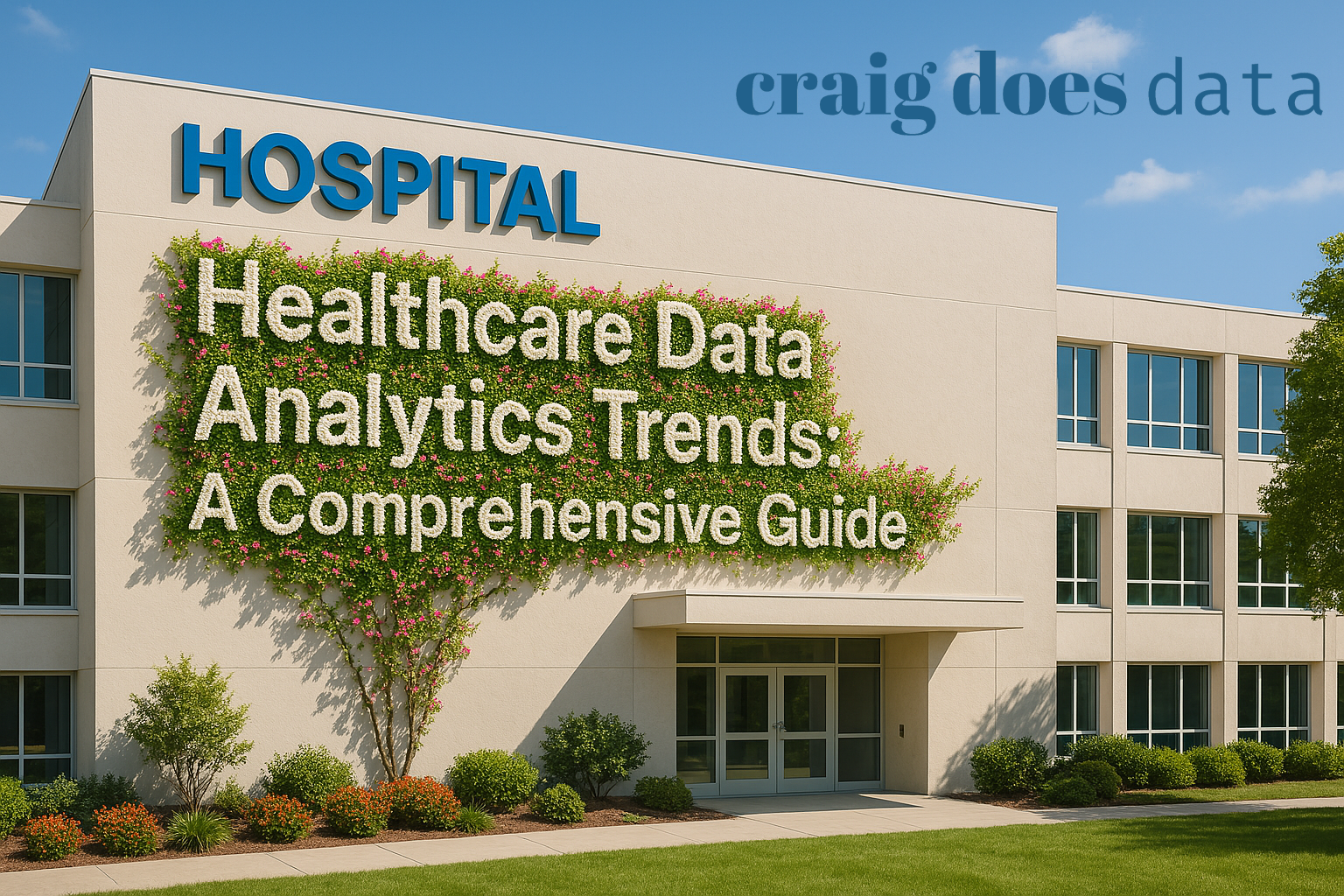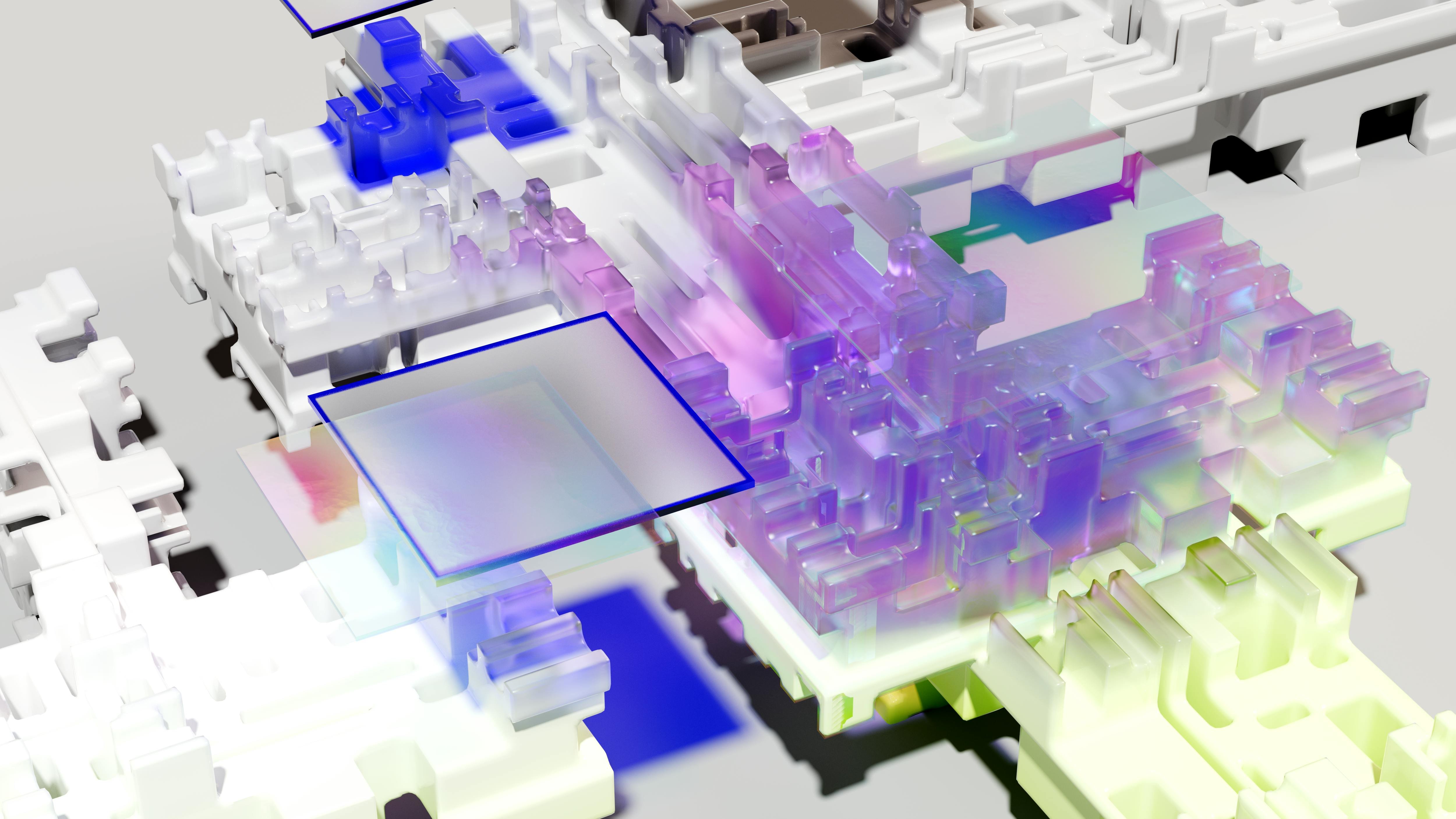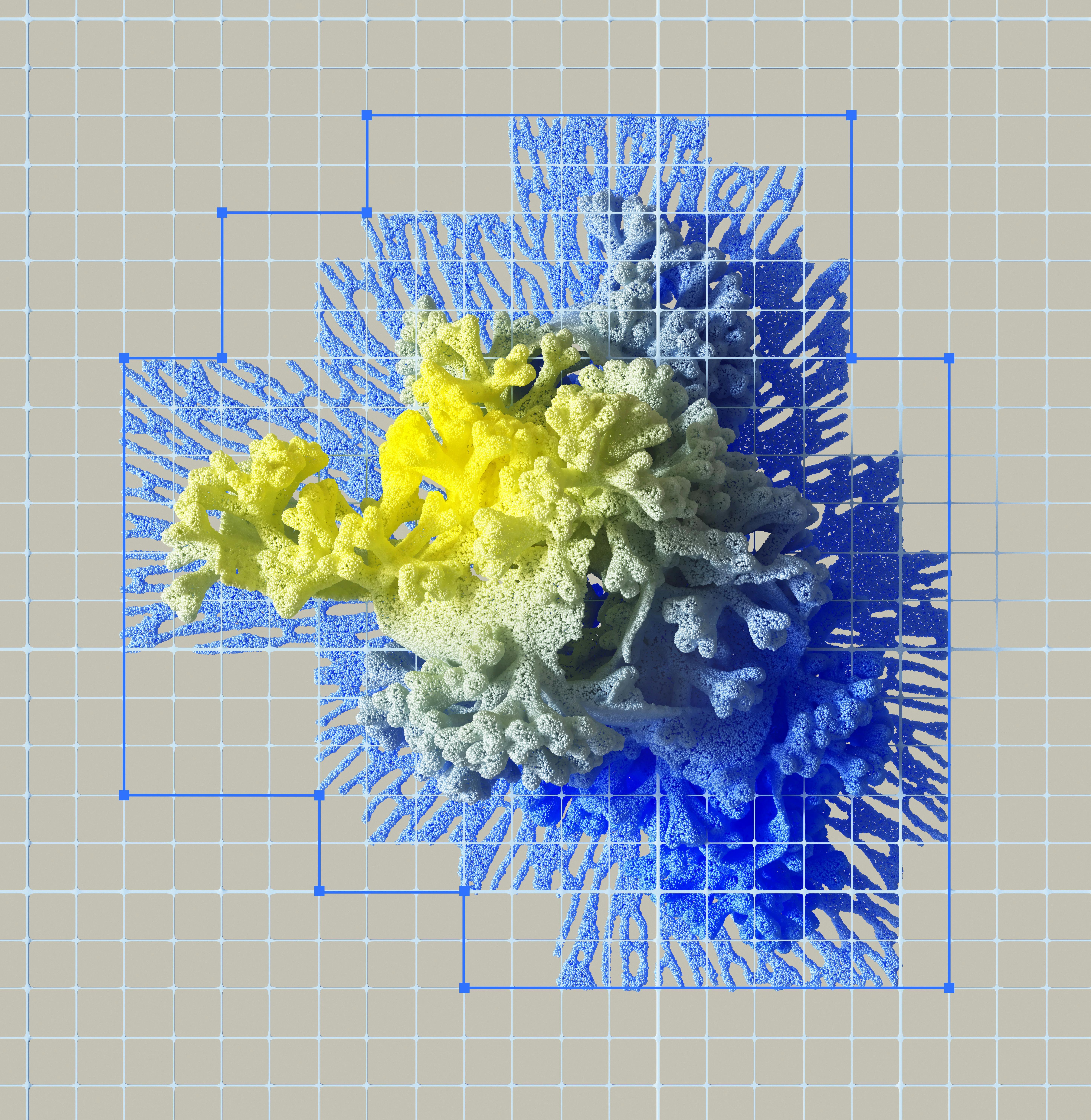
Healthcare Data Analytics Trends: A Comprehensive Guide for Business Professionals and Small Business Owners
Welcome to your comprehensive guide to the dynamic world of healthcare data analytics! In today's rapidly evolving digital landscape, the healthcare industry is undergoing a monumental transformation, driven significantly by the power of data. From personalized patient care to streamlined operational efficiencies, data analytics is no longer a peripheral tool but a central pillar supporting advancements and strategic decisions across the healthcare spectrum. As we navigate an era where digital health solutions are becoming increasingly integrated, understanding the trends shaping healthcare data analytics is crucial for business professionals, healthcare providers, and especially for small business owners venturing into or already operating within this vital sector.
The healthcare industry is generating and collecting data at an unprecedented rate – from electronic health records (EHRs) and wearable devices to genomic sequencing and clinical trial data. This vast ocean of information, when properly analyzed, holds the key to unlocking groundbreaking insights. These insights are not just about improving clinical outcomes; they are also about optimizing business models, enhancing patient engagement, and navigating the complexities of healthcare management in an increasingly regulated and competitive environment. For small business owners, whether you are developing a new health-tech startup, managing a clinic, or providing specialized healthcare services, leveraging data analytics effectively can be the differentiator that propels your business forward.
This guide is designed to be your authoritative yet welcoming resource, breaking down the complexities of healthcare data analytics into digestible and actionable insights. Whether you are a seasoned analyst looking to refine your strategies or a newcomer eager to understand the basics, we aim to provide value at every level. We will delve into the most impactful trends currently shaping the industry, explore their practical implications, and discuss the challenges and opportunities they present. By the end of this journey, you will have a clearer vision of how healthcare data analytics is transforming the industry and how you can strategically position yourself or your business to thrive in this data-driven future. Let's embark on this exploration together and unlock the potential of healthcare data analytics.
The Growing Importance of Healthcare Data Analytics

The ascent of healthcare data analytics is not merely a technological evolution; it’s a fundamental shift in how healthcare is delivered, managed, and improved. The increasing volume, velocity, and variety of healthcare data necessitate sophisticated analytical tools and techniques to transform raw data into actionable intelligence. This section delves into why data analytics has become so indispensable in the modern healthcare landscape, touching upon its multifaceted roles in enhancing patient outcomes, optimizing operational efficiency, achieving cost savings, personalizing patient care, and predicting future healthcare trends.
Improving Patient Outcomes and Operational Efficiency: At its core, healthcare data analytics is about improving lives. By analyzing patient data – including medical history, treatment responses, and lifestyle factors – healthcare providers can gain deeper insights into disease patterns, treatment effectiveness, and risk factors. For instance, predictive analytics can identify patients at high risk of readmission, allowing hospitals to implement proactive interventions and reduce readmission rates. Operationally, data analytics optimizes resource allocation, streamlines workflows, and reduces wait times. Hospitals can use data to predict patient volumes, staffing needs, and inventory requirements, ensuring efficient service delivery and better patient flow. Imagine a hospital using real-time analytics to monitor bed occupancy and emergency room traffic, dynamically adjusting staffing levels to meet demand and improve patient throughput. This not only enhances patient experience but also significantly boosts operational efficiency.
Achieving Cost Savings in Healthcare: Healthcare costs are a global concern, and data analytics offers powerful tools to identify and eliminate inefficiencies and waste. By analyzing claims data, hospital billing records, and pharmaceutical spending, healthcare organizations can pinpoint areas of overspending and implement cost-effective strategies. For example, analytics can help identify fraudulent claims, optimize supply chain management, and reduce medication errors – all of which contribute to significant cost reductions. Furthermore, preventative care, informed by data analytics, is inherently more cost-effective than reactive treatment. By identifying populations at risk for chronic diseases and implementing targeted prevention programs, healthcare systems can reduce the long-term burden of expensive treatments and hospitalizations.
Personalizing Patient Care and Predicting Healthcare Trends: The era of one-size-fits-all medicine is fading, replaced by a growing emphasis on personalized or precision medicine. Data analytics is the engine driving this shift. By analyzing individual patient data in conjunction with broader population health data, healthcare providers can tailor treatment plans to each patient's unique genetic makeup, lifestyle, and medical history. Genomic analytics, for example, is revolutionizing cancer treatment by identifying specific genetic mutations that can be targeted with personalized therapies. Moreover, data analytics plays a crucial role in predicting healthcare trends and preparing for future challenges. Analyzing epidemiological data, demographic shifts, and environmental factors can help public health organizations anticipate outbreaks, plan for resource allocation during pandemics, and address emerging health crises proactively. Consider the COVID-19 pandemic, where data analytics was instrumental in tracking the spread of the virus, predicting hotspots, and informing public health interventions.
In summary, the growing importance of healthcare data analytics stems from its profound ability to transform healthcare from reactive and generalized to proactive, personalized, and efficient. It empowers healthcare professionals to make data-driven decisions at every level, ultimately leading to better patient outcomes, optimized operations, reduced costs, and a more resilient and responsive healthcare system. For business professionals and small business owners in the healthcare sector, understanding and leveraging data analytics is not just an advantage; it is becoming a prerequisite for success and sustainability in the 21st century.
Key Trends in Healthcare Data Analytics
The field of healthcare data analytics is not static; it's a vibrant and rapidly evolving landscape driven by technological advancements, increasing data availability, and the pressing need for more efficient and effective healthcare solutions. To navigate this dynamic environment, it's essential to understand the key trends that are currently shaping the industry. In this section, we will explore four pivotal trends: Artificial Intelligence and Machine Learning, Big Data in Healthcare, Real-Time Analytics, and Data Security and Privacy. Each of these trends represents a significant opportunity and challenge for business professionals and small business owners in the healthcare sector.
1. Artificial Intelligence and Machine Learning

Artificial Intelligence (AI) and Machine Learning (ML) are no longer futuristic concepts in healthcare; they are here, transforming data analytics in profound ways. AI and ML algorithms can analyze vast datasets to identify patterns, make predictions, and automate tasks with a speed and accuracy that surpasses human capabilities. In healthcare, this translates to a revolution across various domains, from diagnostics and treatment to drug discovery and patient management. You can further explore the broader impact of AI in data analytics in another article.
Specific Applications:
- Predictive Analytics: ML models can predict patient risk scores for various conditions, such as heart disease, diabetes, and sepsis, based on their medical history and current health data. This allows for proactive interventions and personalized preventative care. For example, hospitals are using predictive models to identify patients at high risk of developing pressure ulcers, enabling nurses to implement preventative measures early on.
- Automated Diagnosis: AI algorithms, particularly in medical imaging, are enhancing diagnostic accuracy and speed. AI can analyze X-rays, CT scans, and MRIs to detect subtle anomalies indicative of diseases like cancer, often outperforming human radiologists in terms of sensitivity and specificity. Companies are developing AI-powered diagnostic tools for conditions ranging from diabetic retinopathy to skin cancer, making expert-level diagnostics more accessible.
- Personalized Medicine: AI and ML are crucial in realizing the promise of personalized medicine. By integrating genomic data, clinical data, and lifestyle information, AI algorithms can identify the most effective treatment strategies for individual patients. In oncology, AI is used to analyze tumor genomics and predict patient response to different chemotherapy regimens, leading to more targeted and effective cancer therapies.
- Drug Discovery and Development: The traditional drug discovery process is lengthy and expensive. AI is accelerating this process by analyzing biological data, predicting drug efficacy and toxicity, and identifying potential drug candidates. AI algorithms can screen millions of compounds to identify those with the highest potential for therapeutic effect, significantly reducing the time and cost of bringing new drugs to market.
- Administrative and Operational Efficiencies: Beyond clinical applications, AI is also streamlining administrative and operational tasks in healthcare. AI-powered chatbots can handle patient inquiries, schedule appointments, and provide basic medical advice, reducing the workload on human staff. ML algorithms can also optimize hospital operations by predicting patient flow, managing bed occupancy, and improving supply chain efficiency.
Business Leverage: For businesses in the healthcare analytics space, AI and ML represent a significant opportunity. Developing AI-powered diagnostic tools, predictive analytics platforms, or personalized medicine solutions can address critical needs in the healthcare market. Small businesses can focus on niche applications of AI, such as developing specialized AI algorithms for specific medical conditions or integrating AI into existing healthcare workflows. Collaboration with hospitals, research institutions, and pharmaceutical companies can provide access to data and expertise necessary for developing and validating AI-driven healthcare solutions.
2. Big Data in Healthcare

"Big Data" in healthcare refers to the massive volumes of diverse data generated from various sources, including electronic health records (EHRs), medical imaging, genomics, wearable devices, pharmaceutical research, and insurance claims. This data is characterized by its volume, velocity, variety, veracity, and value – the 5 Vs of Big Data. The sheer scale and complexity of this data require advanced analytics techniques to extract meaningful insights and drive impactful changes in healthcare.
Uncovering Patterns and Insights: Big Data analytics enables healthcare organizations to uncover patterns and insights that would be impossible to discern from smaller datasets. By aggregating and analyzing data from millions of patients, researchers can identify population health trends, understand disease prevalence, and evaluate the effectiveness of different treatments on a large scale. For instance, analyzing Big Data from EHRs across multiple hospitals can reveal regional variations in disease incidence, identify risk factors for specific conditions, and track the spread of infectious diseases more effectively than traditional surveillance methods.
Opportunities with Big Data:
- Population Health Management: Big Data analytics is fundamental to effective population health management. By analyzing demographic data, socioeconomic factors, and health records, healthcare systems can identify high-risk populations and design targeted interventions to improve community health outcomes. Public health agencies use Big Data to monitor disease outbreaks, track vaccination rates, and assess the impact of public health campaigns.
- Comparative Effectiveness Research: Big Data allows for comparative effectiveness research on a scale never before possible. Researchers can analyze real-world patient data to compare the outcomes of different treatments, procedures, and medications, providing evidence-based guidance for clinical decision-making. This research can help optimize treatment protocols, reduce unnecessary procedures, and improve patient care quality.
- Healthcare System Optimization: Analyzing Big Data from hospital operations, patient flows, and resource utilization can lead to significant improvements in healthcare system efficiency. Hospitals can use Big Data analytics to optimize staffing levels, reduce hospital readmissions, improve emergency room throughput, and manage supply chains more effectively.
- Personalized Health and Wellness Programs: The insights derived from Big Data can be used to develop personalized health and wellness programs tailored to individual needs and preferences. By integrating data from wearable devices, lifestyle apps, and EHRs, healthcare providers can offer customized recommendations for diet, exercise, and preventative care, promoting proactive health management.
Challenges of Big Data: While the potential of Big Data in healthcare is immense, it also presents significant challenges. Data privacy and security are paramount concerns, especially with sensitive patient information. Ensuring GDPR compliance and protecting patient data from breaches is crucial. Data integration and interoperability are also major hurdles, as healthcare data is often scattered across disparate systems with varying formats and standards. Addressing these challenges requires robust data governance frameworks, advanced security technologies, and standardized data exchange protocols. Furthermore, the skills gap in data science and analytics expertise within the healthcare industry needs to be bridged to fully leverage the potential of Big Data.
3. Real-Time Analytics

In healthcare, where timely interventions can be life-saving, real-time analytics is becoming increasingly critical. Real-time analytics involves processing and analyzing data as it is generated, providing immediate insights that can support immediate decision-making and improve patient care in dynamic environments. This is particularly relevant in critical care units, emergency rooms, and remote patient monitoring scenarios.
Importance of Real-Time Data Processing: The ability to process data in real-time allows healthcare providers to react swiftly to changing patient conditions, emerging health risks, and operational challenges. Traditional batch processing of data, where data is collected and analyzed periodically, is often too slow for time-sensitive healthcare applications. Real-time analytics bridges this gap, enabling proactive and responsive healthcare delivery.
Applications of Real-Time Analytics:
- Patient Vitals Monitoring: In intensive care units (ICUs) and operating rooms, real-time monitoring of patient vitals is essential. Real-time analytics systems continuously analyze data from patient monitoring devices, such as heart rate, blood pressure, oxygen saturation, and ECG, to detect critical changes and alert medical staff immediately. This enables rapid intervention in cases of sudden deterioration, improving patient outcomes and reducing mortality rates.
- Emergency Room Management: Real-time analytics can optimize emergency room (ER) operations by predicting patient arrivals, monitoring wait times, and tracking resource availability. By analyzing historical data, current patient inflow, and external factors like weather conditions, ERs can anticipate surges in patient volume and allocate staff and resources proactively, reducing overcrowding and improving patient flow.
- Remote Patient Monitoring: With the rise of telemedicine and wearable devices, real-time remote patient monitoring is becoming increasingly prevalent. Wearable sensors and remote monitoring devices continuously collect patient data at home, transmitting it in real-time to healthcare providers. Real-time analytics systems analyze this data to detect anomalies, identify early signs of health deterioration, and trigger timely interventions, such as virtual consultations or home visits, preventing hospitalizations and improving chronic disease management.
- Disease Outbreak Detection: Real-time analysis of public health surveillance data, social media trends, and news feeds can facilitate early detection of disease outbreaks. By monitoring indicators like symptom reports, hospital admissions, and online search queries, public health agencies can identify potential outbreaks in their early stages, enabling rapid response measures to contain the spread of infectious diseases.
- Predictive Alerts and Clinical Decision Support: Real-time analytics can power predictive alert systems and clinical decision support tools. By continuously analyzing patient data, these systems can generate alerts for potential adverse events, such as drug interactions, allergic reactions, or sepsis risk, providing clinicians with timely warnings and recommendations to improve patient safety and treatment decisions.
Implementing real-time analytics in healthcare requires robust infrastructure capable of handling high-velocity data streams, low-latency processing, and secure data transmission. Cloud-based platforms and edge computing technologies are playing a crucial role in enabling real-time healthcare analytics solutions.
4. Data Security and Privacy

As healthcare becomes increasingly data-driven, the imperative to ensure data security and patient privacy grows exponentially. Healthcare data is highly sensitive and regulated, making data security and privacy not just ethical considerations but also legal mandates. Breaches of healthcare data can have severe consequences, including financial penalties, reputational damage, and, most importantly, harm to patient trust and well-being. The ethical considerations around data are further discussed in our article on Data Ethics in Analytics.
Growing Concerns: The healthcare industry is a prime target for cyberattacks due to the high value of patient data. Electronic health records (EHRs) contain a wealth of personal and medical information, making them attractive to cybercriminals. The increasing adoption of connected medical devices and telemedicine platforms also expands the attack surface, creating new vulnerabilities that must be addressed proactively.
Role of Analytics in Data Protection and Compliance: Paradoxically, data analytics itself plays a crucial role in enhancing data security and ensuring compliance with regulations like HIPAA (Health Insurance Portability and Accountability Act) in the United States and GDPR (General Data Protection Regulation) in Europe.
- Threat Detection and Prevention: Security analytics tools leverage machine learning and behavioral analysis to detect and prevent cyber threats. These tools monitor network traffic, system logs, and user activity to identify anomalies and suspicious patterns that may indicate a security breach. Real-time security analytics can alert security teams to potential threats as they emerge, enabling rapid response and mitigation.
- Access Control and Auditing: Data analytics helps enforce access control policies and monitor data access patterns. By analyzing user access logs, organizations can identify unauthorized attempts to access sensitive data and ensure that only authorized personnel have access to patient information. Audit trails generated through data analytics provide accountability and support compliance with regulatory requirements.
- Data Anonymization and De-identification: Analytics techniques, such as data anonymization and de-identification, are used to protect patient privacy while still enabling data sharing for research and public health purposes. These techniques remove or mask personally identifiable information from datasets, allowing researchers to analyze aggregated data without compromising individual patient privacy.
- Compliance Monitoring and Reporting: Data analytics tools can automate compliance monitoring and reporting processes. These tools can track adherence to security policies, identify compliance gaps, and generate reports required for regulatory audits. Continuous compliance monitoring reduces the risk of violations and ensures ongoing data protection.
Best Practices for Maintaining Security:
- Robust Encryption: Implement strong encryption protocols to protect data at rest and in transit. Encrypting EHRs, medical images, and other sensitive data makes it unreadable to unauthorized individuals, even if a breach occurs.
- Multi-Factor Authentication: Enforce multi-factor authentication (MFA) for accessing healthcare systems and data. MFA adds an extra layer of security by requiring users to provide multiple forms of verification, such as passwords and one-time codes, making it more difficult for attackers to gain unauthorized access.
- Regular Security Audits and Penetration Testing: Conduct regular security audits and penetration testing to identify vulnerabilities in healthcare IT systems and infrastructure. Proactive vulnerability assessments allow organizations to address security gaps before they can be exploited by attackers.
- Employee Training and Awareness: Invest in comprehensive employee training programs to raise awareness about data security and privacy best practices. Human error is a significant factor in many data breaches, so educating employees about phishing attacks, social engineering, and secure data handling procedures is crucial.
- Incident Response Planning: Develop and maintain a robust incident response plan to effectively manage data breaches and security incidents. A well-defined incident response plan outlines procedures for detecting, containing, eradicating, recovering from, and learning from security incidents, minimizing the impact of breaches and ensuring timely recovery.
The Role of Data Analytics in Telemedicine

Telemedicine, also known as telehealth, has experienced explosive growth in recent years, accelerated by technological advancements and the increasing demand for remote healthcare services. Telemedicine utilizes digital communication technologies to deliver healthcare services remotely, bridging geographical barriers and enhancing access to care. Data analytics is not just an adjunct to telemedicine; it is an integral component that enhances its effectiveness, personalization, and scalability.
Rise of Telemedicine: The rise of telemedicine is driven by several factors, including:
- Increased Access to Care: Telemedicine extends healthcare access to underserved populations in rural areas, remote communities, and patients with mobility limitations.
- Cost-Effectiveness: Telemedicine can reduce healthcare costs by minimizing travel expenses, reducing hospital readmissions, and improving chronic disease management at home.
- Patient Convenience and Satisfaction: Telemedicine offers greater convenience for patients, allowing them to receive care from the comfort of their homes, reducing wait times and improving patient satisfaction.
- Technological Advancements: Advances in broadband internet, mobile devices, and wearable sensors have made telemedicine more feasible and user-friendly.
- Pandemic-Driven Adoption: The COVID-19 pandemic significantly accelerated the adoption of telemedicine as healthcare systems sought to maintain continuity of care while minimizing in-person visits and reducing infection risks.
Enhancing Remote Patient Monitoring: Data analytics is central to effective remote patient monitoring (RPM) in telemedicine. RPM devices, such as wearable sensors and home monitoring equipment, continuously collect patient physiological data, such as heart rate, blood pressure, glucose levels, and sleep patterns. Real-time analytics systems process this data to:
- Detect Anomalies and Trigger Alerts: Analytics algorithms identify deviations from baseline values and trigger alerts to healthcare providers when critical thresholds are breached, enabling timely interventions to prevent adverse events.
- Personalize Care Plans: Data from RPM devices informs personalized care plans tailored to individual patient needs and conditions. Analytics insights help healthcare providers adjust medication dosages, recommend lifestyle modifications, and optimize treatment strategies remotely.
- Predictive Analytics for Proactive Care: Predictive analytics models can analyze RPM data to forecast patient health trajectories, identify patients at risk of exacerbations or hospitalizations, and enable proactive interventions to prevent disease progression and improve long-term health outcomes.
- Improve Chronic Disease Management: RPM and data analytics are particularly beneficial for managing chronic conditions like diabetes, heart failure, and COPD. Continuous monitoring and data-driven insights empower patients to actively participate in their care, improve medication adherence, and adopt healthier lifestyles, leading to better disease control and reduced healthcare utilization.
Virtual Consultations and Data-Driven Insights: Data analytics also enhances virtual consultations, which are a cornerstone of telemedicine. During virtual visits, healthcare providers can access and analyze patient data from EHRs, RPM devices, and other sources to gain a comprehensive understanding of the patient's health status. Analytics tools can provide:
- Clinical Decision Support: Analytics-driven clinical decision support systems (CDSS) integrated into telemedicine platforms provide clinicians with evidence-based recommendations, alerts, and diagnostic aids during virtual consultations, improving diagnostic accuracy and treatment decisions.
- Personalized Recommendations: Analytics insights enable healthcare providers to deliver personalized health recommendations and advice during virtual visits, tailoring interventions to individual patient needs and preferences.
- Post-Consultation Follow-up: Data analytics facilitates post-consultation follow-up and care coordination. Analytics systems can track patient adherence to treatment plans, monitor health outcomes, and trigger reminders for follow-up appointments, ensuring continuity of care and improved patient engagement.
- Telemedicine Platform Optimization: Analytics data on virtual consultation patterns, patient feedback, and utilization metrics can be used to optimize telemedicine platform design, improve user experience, and enhance service delivery.
Benefits of Integrating Analytics with Telehealth Solutions: The integration of data analytics with telehealth solutions offers numerous benefits for patients, providers, and healthcare systems:
- Improved Patient Outcomes: Data-driven telemedicine leads to better patient outcomes through proactive monitoring, personalized care, and timely interventions.
- Enhanced Care Coordination: Telemedicine platforms integrated with analytics facilitate seamless care coordination between patients, primary care physicians, specialists, and other healthcare providers.
- Increased Efficiency and Productivity: Telemedicine and analytics streamline workflows, reduce administrative burden, and improve provider productivity by enabling remote care delivery and data-driven decision-making.
- Reduced Healthcare Costs: Telemedicine, enhanced by data analytics, contributes to healthcare cost savings by reducing hospital readmissions, minimizing travel expenses, and promoting preventative care.
- Scalable and Sustainable Healthcare Delivery: Data-driven telemedicine solutions are scalable and sustainable, enabling healthcare systems to extend their reach, improve access to care, and meet the growing demands of an aging population and increasing prevalence of chronic diseases.
Challenges in Healthcare Data Analytics
Despite the immense potential and transformative impact of healthcare data analytics, the path to realizing its full benefits is not without significant challenges. The healthcare industry faces unique hurdles related to data integration, data quality, data governance, and the skills gap in analytics expertise. Overcoming these challenges is crucial for unlocking the true power of data analytics in healthcare and ensuring its responsible and effective implementation.
1. Data Integration and Interoperability

One of the most persistent and significant challenges in healthcare data analytics is data integration and interoperability. Healthcare data is often fragmented and siloed across disparate systems, departments, and organizations. Electronic health records (EHRs), medical imaging systems, laboratory information systems, pharmacy dispensing systems, wearable devices, and insurance claims databases operate independently, using different data formats, standards, and terminologies. This lack of seamless data exchange hinders comprehensive data analysis and limits the potential for deriving holistic insights.
Challenge of Disparate Data Sources: The healthcare ecosystem is characterized by a multitude of data sources that do not readily communicate with each other. Hospitals, clinics, pharmacies, laboratories, insurance companies, and wearable device manufacturers each manage their own data repositories, often using proprietary systems and data formats. Integrating data from these diverse sources into a unified and analyzable format is a complex undertaking.
Importance of Interoperability: Interoperability, the ability of different information systems, devices, and applications to access, exchange, and use data in a coordinated manner, is essential for overcoming data silos and enabling effective healthcare data analytics. True interoperability requires not only technical compatibility but also semantic interoperability, ensuring that data is understood consistently across different systems and organizations.
Potential Solutions:
- Standardized Data Formats and Terminologies: Adopting standardized data formats, such as HL7 FHIR (Fast Healthcare Interoperability Resources), and standardized terminologies, such as SNOMED CT and LOINC, is crucial for improving data interoperability. These standards provide common frameworks for data exchange and semantic consistency, facilitating data integration across different systems.
- APIs and Data Exchange Platforms: Utilizing APIs (Application Programming Interfaces) and data exchange platforms can streamline data sharing between healthcare systems. APIs enable secure and standardized data access and exchange, while data exchange platforms provide centralized infrastructure for data aggregation and integration.
- Data Warehouses and Data Lakes: Implementing data warehouses and data lakes can consolidate data from disparate sources into centralized repositories for analysis. Data warehouses are structured repositories designed for analytical querying, while data lakes are more flexible repositories that can store structured, semi-structured, and unstructured data. These centralized repositories facilitate comprehensive data analysis and reporting.
- Data Virtualization: Data virtualization technologies provide a virtual layer that abstracts away the complexities of underlying data sources, allowing users to access and analyze data from multiple systems without physically moving or integrating the data. Data virtualization simplifies data access and integration, reducing the burden of ETL (Extract, Transform, Load) processes.
- Collaborative Data Governance Frameworks: Establishing collaborative data governance frameworks that involve stakeholders from different healthcare organizations is essential for promoting data sharing and interoperability. These frameworks define data sharing agreements, data quality standards, and data access protocols, fostering trust and collaboration in data exchange. You can read more about breaking down data silos to improve integration.
2. Data Quality and Governance

The effectiveness of healthcare data analytics is fundamentally dependent on the quality of the data being analyzed. "Garbage in, garbage out" is a particularly apt adage in healthcare analytics, where inaccurate, incomplete, or inconsistent data can lead to flawed insights, misguided decisions, and potentially harmful patient outcomes. Data quality and robust data governance are therefore paramount concerns in healthcare data analytics.
Significance of Data Quality: High-quality data is accurate, complete, consistent, timely, valid, and reliable. In healthcare, data quality issues can arise from various sources, including:
- Data Entry Errors: Manual data entry in EHRs and other systems is prone to human errors, such as typos, omissions, and incorrect coding.
- Data Inconsistency: Data may be recorded differently across different systems or departments, leading to inconsistencies in terminology, units of measurement, and data definitions.
- Data Completeness Issues: EHRs may have missing data fields, incomplete patient records, or gaps in historical data, hindering comprehensive analysis.
- Data Outdatedness: Healthcare data can become outdated quickly, especially in rapidly changing clinical environments. Using outdated data for real-time analytics or decision-making can lead to inaccurate insights and suboptimal outcomes.
- Data Bias: Datasets may contain biases due to sampling methods, data collection processes, or systematic errors, leading to skewed analytical results and unfair or discriminatory outcomes.
Challenges of Maintaining Data Accuracy and Consistency: Maintaining data accuracy and consistency in healthcare is a continuous challenge due to the complexity of healthcare processes, the volume and velocity of data generation, and the decentralized nature of healthcare data management.
Best Practices for Effective Data Governance: Effective data governance frameworks are essential for ensuring data quality and managing data assets responsibly in healthcare. Key components of data governance include:
- Data Quality Policies and Procedures: Establish clear data quality policies and procedures that define data quality standards, data validation rules, and data cleansing processes. Implement automated data quality checks and validation routines to detect and correct data errors proactively.
- Data Stewardship and Accountability: Assign data stewards and data owners who are responsible for data quality and data governance within their respective domains. Data stewards oversee data quality, data definitions, and data usage, while data owners are accountable for data assets and data governance compliance.
- Data Standardization and Master Data Management: Implement data standardization initiatives to harmonize data formats, terminologies, and data definitions across different systems. Master data management (MDM) solutions can create a single, authoritative source of truth for critical data entities, such as patients, providers, and medications, ensuring data consistency and accuracy.
- Data Governance Committees and Councils: Establish data governance committees or councils that bring together stakeholders from different departments and organizations to oversee data governance policies, resolve data quality issues, and promote data-driven decision-making.
- Data Literacy and Training: Invest in data literacy and training programs for healthcare professionals and data analysts to enhance their understanding of data quality principles, data governance policies, and data analysis best practices. A data-literate workforce is essential for promoting data-driven culture and ensuring responsible data usage.
3. Skills and Expertise Gap

The rapid growth of healthcare data analytics has created a significant skills and expertise gap in the healthcare industry. The demand for skilled data analysts, data scientists, and healthcare informaticians who can effectively leverage data analytics to improve healthcare delivery far outpaces the current supply. This shortage of skilled professionals is a major bottleneck hindering the widespread adoption and effective implementation of healthcare data analytics.
Shortage of Skilled Data Analysts: The healthcare industry is facing a shortage of professionals with the necessary skills in data analytics, statistics, machine learning, and healthcare domain knowledge. Traditional healthcare education programs often lack sufficient training in data analytics, while data science programs may not adequately address the specific needs and challenges of the healthcare domain.
Importance of Training and Upskilling: Addressing the skills gap requires concerted efforts in training and upskilling healthcare professionals and attracting data science talent to the healthcare sector. Investing in training programs, professional development opportunities, and academic partnerships is crucial for building a skilled healthcare data analytics workforce.
Ways to Bridge the Skills Gap:
- Partnerships with Educational Institutions: Healthcare organizations can partner with universities, colleges, and vocational schools to develop specialized training programs in healthcare data analytics. These programs can combine data science curricula with healthcare domain knowledge, preparing graduates to meet the specific needs of the healthcare industry.
- Internal Training and Upskilling Programs: Healthcare organizations should invest in internal training and upskilling programs to equip their existing workforce with data analytics skills. These programs can offer workshops, online courses, and mentorship opportunities to enhance the data literacy and analytical capabilities of healthcare professionals.
- Recruiting Data Science Talent from Other Industries: Healthcare organizations can attract data science talent from other industries by highlighting the meaningful impact of data analytics in healthcare and offering competitive compensation and career development opportunities. Data scientists from finance, technology, and other sectors can bring valuable skills and expertise to the healthcare domain.
- Developing User-Friendly Analytics Tools: Developing user-friendly analytics tools and platforms can empower healthcare professionals with limited data science expertise to perform basic data analysis and generate insights. Intuitive dashboards, self-service analytics platforms, and no-code/low-code analytics tools can democratize data access and analysis within healthcare organizations.
- Promoting Data Literacy Across the Organization: Fostering a data-driven culture requires promoting data literacy across the entire healthcare organization. Data literacy training should be provided to all employees, regardless of their roles or technical backgrounds, to enhance their understanding of data concepts, data analysis principles, and the value of data-driven decision-making.
The Future of Healthcare Data Analytics

The future of healthcare data analytics is poised for continued innovation and transformative growth. Emerging trends and technologies are set to further revolutionize how healthcare data is collected, analyzed, and utilized to improve patient care, optimize healthcare operations, and advance medical research. Staying informed about these emerging trends is crucial for business professionals and small business owners in the healthcare sector to anticipate future opportunities and challenges.
Emerging Trends and Technologies:
- Internet of Medical Things (IoMT) and Wearable Health Devices: The proliferation of IoMT devices and wearable health sensors is generating an explosion of real-time patient data. These devices continuously monitor patient vitals, activity levels, sleep patterns, and other health metrics, providing a rich stream of data for personalized healthcare and remote patient monitoring. Advanced analytics techniques will be needed to process and interpret this vast volume of IoMT data effectively.
- Advanced AI and Deep Learning: AI and deep learning technologies will continue to advance, enabling more sophisticated diagnostic algorithms, predictive models, and personalized treatment strategies. Deep learning models are particularly promising for analyzing complex healthcare data, such as medical images, genomic data, and natural language processing of clinical notes.
- Federated Learning and Privacy-Preserving Analytics: Federated learning is an emerging AI technique that enables machine learning models to be trained on decentralized data sources without sharing the raw data itself. This approach addresses data privacy concerns and facilitates collaborative data analysis across multiple healthcare organizations while preserving patient confidentiality. Privacy-preserving analytics techniques, such as differential privacy and homomorphic encryption, are also gaining traction in healthcare to enable data analysis while protecting sensitive information.
- Augmented Reality (AR) and Virtual Reality (VR) in Data Visualization: AR and VR technologies offer new ways to visualize and interact with healthcare data. AR and VR applications can enhance medical training, surgical planning, patient education, and data exploration for healthcare professionals. Immersive data visualizations can improve understanding of complex datasets and facilitate data-driven decision-making.
- Genomic and Precision Medicine Analytics: Advances in genomics and precision medicine are driving the need for sophisticated analytics tools to analyze genomic data, integrate it with clinical data, and personalize treatment strategies based on individual patient genetic profiles. Genomic analytics will play an increasingly important role in cancer treatment, pharmacogenomics, and preventative medicine.
Potential Impact of Innovations: These emerging trends and technologies have the potential to profoundly impact healthcare in the coming years:
- More Personalized and Proactive Healthcare: Data analytics will drive the shift towards more personalized, proactive, and preventative healthcare models. Data-driven insights will enable healthcare providers to tailor treatments to individual patient needs, predict health risks, and intervene proactively to prevent disease progression.
- Improved Diagnostic Accuracy and Treatment Effectiveness: Advanced AI and deep learning algorithms will enhance diagnostic accuracy, accelerate drug discovery, and optimize treatment effectiveness. Data-driven clinical decision support systems will empower clinicians with evidence-based recommendations and improve patient outcomes.
- More Efficient and Cost-Effective Healthcare Operations: Data analytics will continue to optimize healthcare operations, reduce costs, and improve efficiency. Real-time analytics, predictive modeling, and automation will streamline workflows, reduce hospital readmissions, and improve resource allocation.
- Enhanced Patient Engagement and Empowerment: Telemedicine, wearable devices, and patient-facing analytics tools will empower patients to actively participate in their care, manage their health proactively, and engage with healthcare providers more effectively.
- Accelerated Medical Research and Innovation: Big Data analytics, genomic analytics, and AI-powered research tools will accelerate medical research, facilitate drug discovery, and drive innovation in healthcare technologies and therapies.
Importance of Staying Informed and Adaptable: The healthcare data analytics landscape is rapidly evolving. Business professionals and small business owners in the healthcare sector must stay informed about emerging trends, adapt to technological advancements, and continuously update their skills and strategies to remain competitive and leverage the full potential of healthcare data analytics. Continuous learning, collaboration with technology partners, and proactive adoption of innovative solutions will be key to success in the future of healthcare data analytics.
Conclusion
As we reach the end of this comprehensive guide, it's clear that healthcare data analytics is not just a trend; it's a fundamental transformation reshaping the entire healthcare ecosystem. From improving patient outcomes and personalizing care to optimizing operations and driving medical innovation, data analytics is proving to be an indispensable tool for healthcare professionals, businesses, and policymakers alike. The insights gleaned from healthcare data are empowering stakeholders to make more informed decisions, deliver more effective care, and build a more efficient and sustainable healthcare system.
We've explored the growing importance of healthcare data analytics, delved into key trends such as AI/ML, Big Data, Real-Time Analytics, and Data Security & Privacy, and examined the pivotal role of analytics in telemedicine. We've also acknowledged the significant challenges that the industry faces, including data integration, data quality, and the skills gap, and discussed potential solutions and best practices to overcome these hurdles. Finally, we peered into the future, highlighting emerging trends and technologies that promise to further revolutionize healthcare data analytics in the years to come.
For business professionals and small business owners in the healthcare sector, embracing data analytics is no longer optional; it's a strategic imperative. Whether you are developing innovative health-tech solutions, managing a healthcare practice, or providing specialized healthcare services, leveraging data analytics effectively can be the key differentiator that sets you apart in an increasingly competitive and data-driven market. By understanding the trends, addressing the challenges, and investing in the necessary skills and infrastructure, you can unlock the immense potential of healthcare data analytics to drive success, improve patient care, and contribute to a healthier future.
The journey of healthcare data analytics is ongoing, and the landscape is constantly evolving. Staying informed, adaptable, and committed to continuous learning is essential to navigate this dynamic field and harness its transformative power. As we move forward, collaboration, innovation, and a patient-centric approach will be crucial in ensuring that healthcare data analytics is used responsibly, ethically, and effectively to benefit individuals, communities, and the healthcare system as a whole. The future of healthcare is data-driven, and the opportunities are limitless for those who are ready to embrace the power of healthcare data analytics.
What next?
Ready to delve deeper into the world of healthcare data analytics and equip your business or practice for success in this data-driven era? Explore the resources available on our website to access in-depth articles, tools, and expert insights that can help you navigate the complexities of healthcare data analytics and implement effective strategies.
We encourage you to share this guide with your peers, colleagues, and network on social media to spark conversations and promote a wider understanding of the transformative potential of healthcare data analytics. By sharing knowledge and fostering collaboration, we can collectively advance the field and unlock even greater benefits for patients and the healthcare system. Let's work together to build a healthier, more data-driven future for healthcare.
References and Further Reading
Below is a curated list of resources for those eager to deepen their understanding of healthcare data analytics, its trends, challenges, and future directions. These references include authoritative publications, industry reports, and academic works that provide further insights into the topics discussed in this guide:
- Murdoch, T. B., & Detsky, A. S. (2013). The inevitable application of big data to health care. JAMA, 309(22), 2351-2352.
- Raghupathi, W., & Raghupathi, V. (2014). Big data analytics in healthcare: promise and potential. Health Information Science and Systems, 2(1), 3.
- World Health Organization (WHO). (2021). Global strategy on digital health 2020-2025. (PDF Download) Geneva: World Health Organization.
- HIPAA Journal. (Ongoing). Regular updates and articles on HIPAA compliance and data security in healthcare. www.hipaajournal.com
